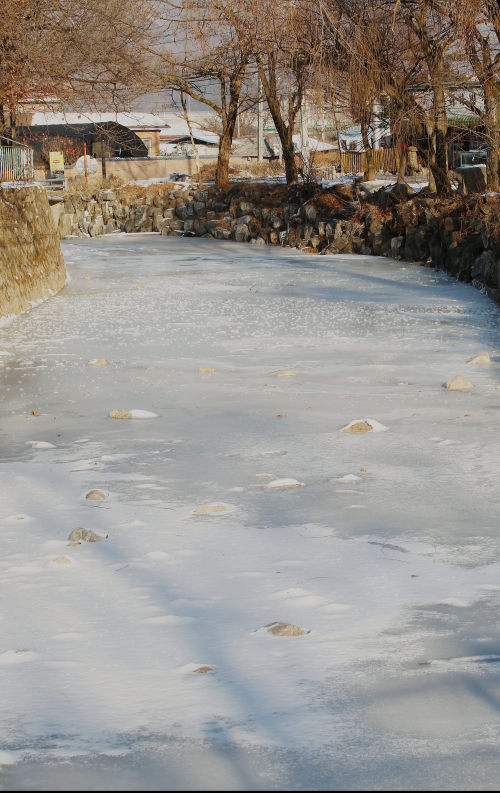
Korea’s average temperature could rise 2.2 to 4.2 degrees Celsius by the 22nd century, a recent government report on climate change warned Sunday.
The National Institute of Environmental Research, along with a team at Seoul National University, studied climate and air conditions in Korea and East Asia by applying two different economic growth patterns.
According to the first scenario, which assumed rapid economic growth accompanied by greenhouse emissions continuing at the current speed, the average temperature on the Korean Peninsula would be 14 degrees Celsius in the 2100s, as compared to 9.8 degrees Celsius between 1970 and 2000.
By 2100, the study found, the global population could surpass 21 billion, with the CO2 emissions surging from the current 22 billion tons to 160 billion tons, the study found.
The ozone level during the peak season in summer also will increase from 30 ppb to 39 to 42 ppb in 2020, the scenario predicted.
However, the second scenario, based on the nation’s environmentally sustainable growth in the future, said that the average temperature would see 2.2 degrees Celsius increase from now.
Air quality was also expected to improve as the emission of air pollutants starts to decrease gradually from 2020, the environmental scenario said.
Both scenarios predicted a shorter winter season in major cities by the 2100s. Based on the growth scenario, the length of winter could be half that of the 2000s.
By Lee Ji-yoon (jylee@heraldcorp.com)
<한글 기사>
국립환경과학원은 16일 `기후변화에 관한 정부간 협의체'(IPCC)의 기후변화 시나리오에 따른 한반도의 기후를 전망한 결과 2100년대의 평균 기온이 2000년대보다 2.2∼4.2도 오를 것으로 예측했다.
환경과학원은 서울대 연구진과 동아시 아ㆍ한반도의 기후 및 대기환경 변화를 동시에 예측할 수 있는 시스템을 개발해 화석연료사용 중심의 빠른 경제성장이나 친환경적인 성장을 가정한 IPCC 기후변화 시나리오에 대입했다.
온실가스의 배출량 증가가 지속하는 시나리오(A2)의 경우 2100년대(2091~2100년)의 평균 기온이 14도로 2000년대(1970~2000년)의 9.8도보다 4.2도 오를 것으로 예상됐다.
전반적으로 빠른 경제성장을 가정한 A2에서는 1990년 현재 53억명인 세계 인구가 2100년에는 210억명으로 늘어나고, 이산화탄소 배출량도 220억t에서 1천60t으로 증가하는 것으로 보고됐다.
국내 하절기(6∼8월)의 8시간 하루 최고 오존 평균농도는 2000년대 30ppb에서 2020년대 이후에는 39∼42ppb 수준으로 높아질 것으로 전망됐다.
이산화황(SO2)이 2000년대 6.1ppb에서 2050년대 9ppb로, 초미세먼지인 PM2.5는 2000년대 24㎍/㎥에서 2050년대 45.3㎍/㎥, 2100년대 67㎍/㎥로 각각 증가하는 것으로 나타났다.
지속가능성을 중시하는 환경친화적 시나리오(B1) 아래에서 2100년대의 평균 기온은 2000년대(9.8도)보다 2.2도 오른 12도로 예측됐다.
B1 시나리오에서는 2020년을 기점으로 대기오염물질 배출량이 점차 감소해 2050년 이후 고농도 오존 발생 빈도가 오히려 낮아져 대기질이 개선되는 것으로 전망됐다고 과학원은 전했다.
4개 도시(서울, 부산, 광주, 강릉)의 겨울 길이는 A2, B1 시나리오 모두 2100년대까지 점차 감소하는 것으로 나타났으며, 특히 A2 시나리오에서 2100년대 겨울 길이가 2000년대에 비해 50% 이상 줄어드는 것으로 나왔다.
(연합뉴스)







![[KH Explains] Hyundai's full hybrid edge to pay off amid slow transition to pure EVs](http://res.heraldm.com/phpwas/restmb_idxmake.php?idx=644&simg=/content/image/2024/04/18/20240418050645_0.jpg&u=20240419100350)






![[From the Scene] Monks, Buddhists hail return of remains of Buddhas](http://res.heraldm.com/phpwas/restmb_idxmake.php?idx=652&simg=/content/image/2024/04/19/20240419050617_0.jpg&u=20240419175937)

![[KH Explains] Hyundai's full hybrid edge to pay off amid slow transition to pure EVs](http://res.heraldm.com/phpwas/restmb_idxmake.php?idx=652&simg=/content/image/2024/04/18/20240418050645_0.jpg&u=20240419100350)

![[Today’s K-pop] Illit drops debut single remix](http://res.heraldm.com/phpwas/restmb_idxmake.php?idx=642&simg=/content/image/2024/04/19/20240419050612_0.jpg&u=)